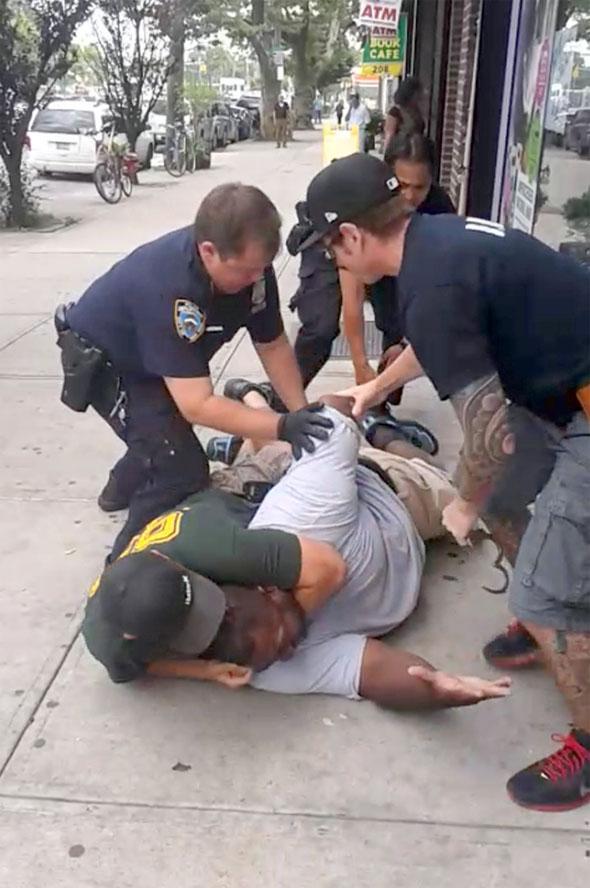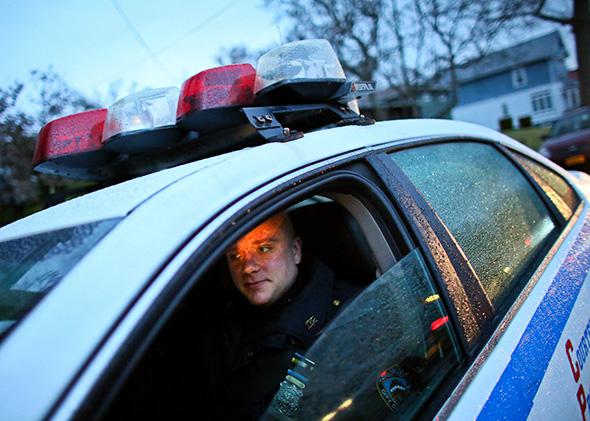What can explain a Staten Island grand jury’s refusal to indict police officer Daniel Pantaleo for the chokehold death of Eric Garner? Even if any answer is speculative and inconclusive, asking the question is an appropriate and maybe cathartic effort—one that can help prosecutors address these difficult cases in a more effective way that inspires public confidence in the outcome.
The police confrontation with Garner, captured on video, is a powerful and horrifying image, especially to people who remember the vicious beating of Rodney King by Los Angeles police in March 1991, also captured on videotape, and the powerful emotions and riots that followed the jury’s acquittal of those officers. The fact that the New York protests have been relatively peaceful is a tribute to the good sense and restraint of New Yorkers, who while outraged by the grand jury’s inaction, hope that significant changes in police practices will be forthcoming.
Any effort to decipher the unknown numerical vote of the grand jury, reportedly composed of 12 whites and nine blacks and Hispanics, and why they voted the way they did, has to make some reference not simply to demographics but to the nature and politics of the community. Staten Island has long been considered an outlier among the other boroughs, described as a “conservative bastion in a liberal city.”
It’s unclear whether that conservatism may have contributed to the grand jury’s decision. What is clear, however, is the image of troubled race relations in Staten Island. A few years ago, the Department of Justice monitored racial tensions and police responses after the savage beating of a Mexican immigrant in the neighborhood of Port Richmond, and in 2008, there was a race-motivated election-night rampage, in which a group of white youths vented their anger at President Obama’s election by brutally beating a black man with a metal pipe and police baton.
As former prosecutors assigned to prosecute police cases, we are well aware of attitudes the public holds about police officers, especially as revealed by grand jurors and trial jurors asked to hold police officers criminally liable for their misconduct. Jurors are not very tolerant of police officers who take bribes, steal drugs, and lie. Jurors don’t have to put themselves in a police officer’s shoes to know that such conduct is dishonest, reprehensible, and should be punished. But jurors don’t share this intolerance when it comes to an officer’s use of force in encounters with possible wrongdoers who may be seen as endangering the police officer and others. Here the juror is not being asked to assess the officer’s honesty; she is being asked to assess the officer’s judgment. In this situation, jurors tend not to second-guess the officer’s often split-second judgment that a forceful response was required in a typically tense, volatile, and dangerous encounter. These jurors trust the police to protect their property, their well-being, and even their lives from violent predators in their community. When a police officer is accused of using excessive force, even lethal force, jurors and the public in general typically give the officer the benefit of the doubt.
We do not know at this time the nature of Officer Pantaleo’s testimony in the grand jury. We do know he was the last witness, and we also have a sense of what he said from the remarks of his lawyer, who likely prepared his testimony very carefully. Based on what we do know, we can assume that Pantaleo appeared to be contrite, even grief-stricken, at the death of Garner. He surely emphasized that it was never his intention to injure or harm anyone, and that at most it was a tragic accident, certainly not a crime. He acknowledged that Garner stated, “I can’t breathe.” Pantaleo said, according to his lawyer, that he immediately disengaged and tried to get off Garner as quickly as he could. Pantaleo, according to his lawyer, downplayed any suggestion that he used a forbidden chokehold by stating that he employed a maneuver he learned at the police academy to try to “tip Mr. Garner off balance,” but that he had to move his arm when they both fell to the ground, and he was in fear that he and Garner would go through a store window.

Photo by New York Daily News/Contributor via Getty Images
There are significant contradictions between Pantaleo’s account (as described by his lawyer) and what is seen in the video. He appears in the video to remain atop Garner well after Garner, lying face down on the pavement with Pantaleo’s arm wrapped around his neck, pleads that he can’t breathe. Nor did Pantaleo’s arm move off Garner’s neck when they fell to the ground, as Pantaleo claimed. Presumably these contradictions, and other aspects of Pantaleo’s story, would have been sharply probed and impeached by any responsible grand jury prosecutor. Facing the target of the grand jury’s investigation is a perfect opportunity for any prosecutor to grill the target on any and every aspect of his story, to try to demonstrate to the grand jury that the story is not credible. We have done that often. Did the Staten Island prosecutor treat the officer’s self-serving account with kid gloves, with leading and helpful questions? That is what happened in the Ferguson grand jury. It is crucial that we find out what happened in Staten Island. In New York, only the prosecutor can formally seek to ask the court to publish the transcripts. Staten Island District Attorney Daniel Donovan has not done so. Even though grand jury testimony is rarely released to the public, given the public’s access to the videotape of the choking, this is the case that cries out for the disclosure. We encourage the district attorney to publish Pantaleo’s grand jury testimony.
Complicating the grand jury’s responsibilities is the fact that the homicide charges jurors had to consider are difficult to understand and apply. None of them involve intentional conduct by the officer, so the officer’s plea before the grand jury that he did not intend to injure Garner is irrelevant. The kinds of culpable mental states required for any of the degrees of homicide submitted to the jury involve varying levels of recklessness. So, for murder, the jury would have to find that the officer acted with a “depraved indifference to human life,” wantonly reckless conduct that the actor knew almost to a certainty would result in death or serious physical injury. Consider, as an example, a motorist who causes a pedestrian’s death while driving at 100 miles an hour at high noon in Times Square. Manslaughter in the second degree, punishable by 15 years in jail, requires a showing of recklessness, conduct in which the actor is aware of and consciously disregards a substantial and unjustifiable risk of causing death or serious injury. The owner of a factory where a fatal fire has erupted, who knew that there were flammable gases or substances, disregarded numerous safety violations, and knew that the exits were locked, easily fits into this category. Finally, criminally negligent homicide, punishable by seven years in jail, requires proof not of recklessness but of criminal negligence, where the actor by his conduct fails to perceive a substantial and unjustifiable risk of causing serious physical injury or death.
It is likely that the jury was considering the crime of criminally negligent homicide and disagreeing about it. Even though Pantaleo may not have been aware of a serious risk to Garner’s life, should he have been? Should he have known that violently grabbing Garner around his neck, to the point of hearing Garner plead, “I can’t breathe,” and not disengaging his violent hold of the neck, presented a substantial and unjustifiable risk that would cause serious physical injury—and possible death—to Garner?
The grand jury has spoken. Now it is up to the Justice Department and the United States attorney to decide whether to file federal civil rights charges. In making that decision, it seems to us, it will be very important for the Justice Department to examine the vigorousness of the prosecutor’s grand jury presentation. If Pantaleo’s conduct was aggressively and vigorously pursued, should there be a second effort to indict him? If Pantaleo’s account was not challenged, was justice served or was there a miscarriage of justice? The public needs to know more facts than we now have. District Attorney Donovan should apply to the court to release the entire record of what occurred behind closed doors. Only then will he take the first step to possibly quelling the public’s understandable outcry—by helping establish that justice was pursued in good faith.
